As moths are drawn to a flame, people are drawn to moths. Exhibit A: the recent explosion of #MothMemes on social media. From Facebook groups to Reddit forums, fans are sharing photos and starting conversations about Lepidoptera around the world.
Many butterflies and moths are brightly colored because they’re toxic. “The majority of the time, it has to do with chemistry,” said Akito Kawahara, Ph.D., the associate curator at the Florida Museum of Natural History’s McGuire Center for Lepidoptera and Biodiversity. “As caterpillars they eat plant leaves, and they take the toxins from the leaves, and use [the toxins] to display to their predators.”
Moths that ingest toxins are toxic to all life, not just birds or small mammals. Try and eat one, and it’ll make you sick. “The plants are actually using toxins to protect themselves… and some insects have been able to overcome that,” said Kawahara. As an extra layer of protection, some vivid moths mimic the look of toxic ones, even though they’re not poisonous themselves.
There are more than 160,000 known species of moths (and counting). Many of them remain unknown. Their habits and behaviors remain cryptic. Get out and look for the moths in your neighborhood; there are probably gems hidden in a local tree or under your house shutters.
“The level that we’re at in terms of knowledge is nowhere near mammals. We don’t even know how many moths there are,” says Kawahara.
Here are 11 of the more striking species. If you live in the United States, you can probably find several of these near your home.
-
Rosy Maple Moth
Dryocampa rubicunda
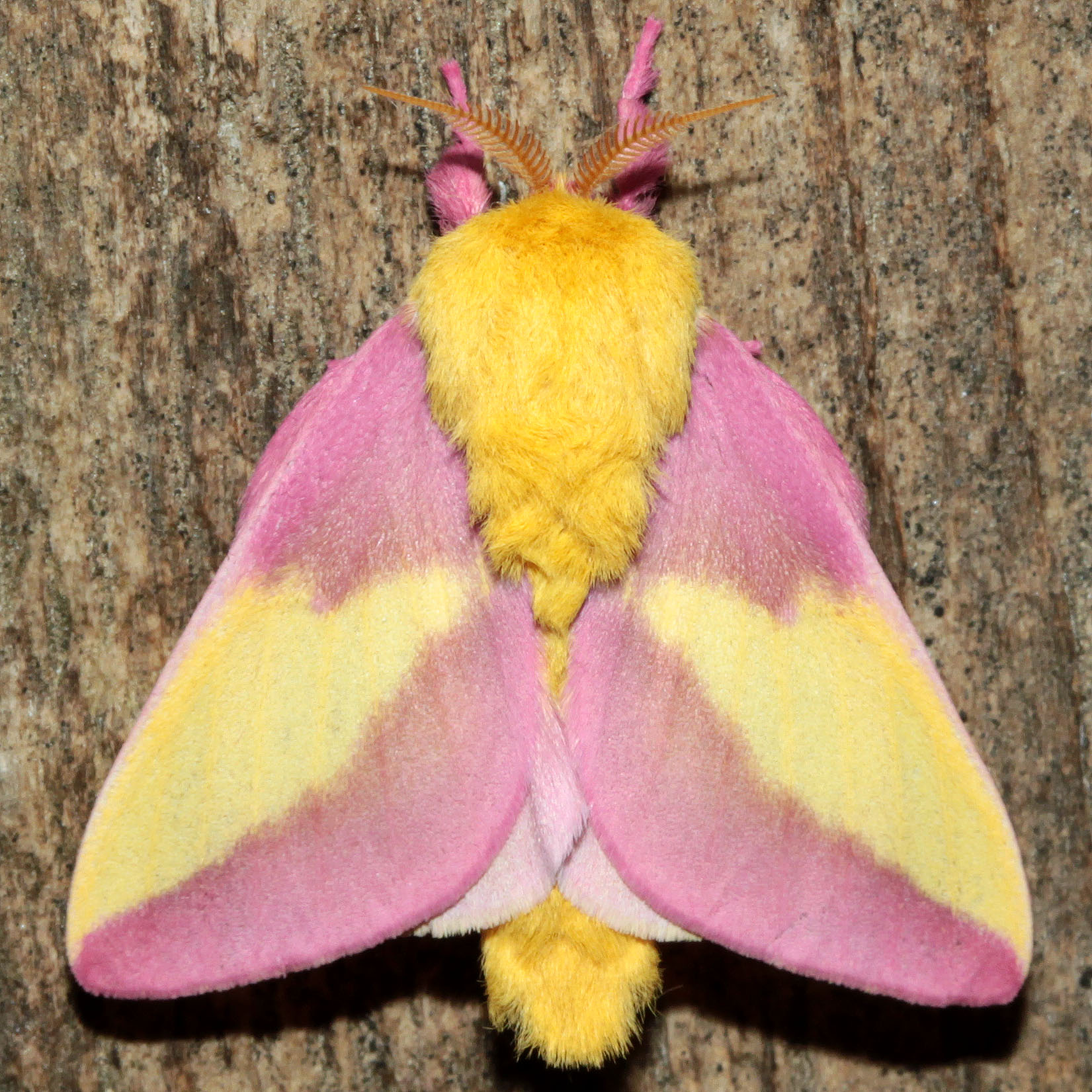
Photo © Ken Childs Known for its fuzzy pink legs and remarkable yellow body, you can spot this insect in the late afternoon and throughout the evening. As its name implies, the caterpillars use maple trees as hosts.
Range: eastern United States
Host Plants: maple trees -
Cecropia Silkmoth
Hyalophora cecropia

Photo © Margo Berke With a striking red and white body and an alluring red, white and dark brown wing pattern, the cecropia silkmoth has a frosted look about it due to the hair-like scales on its wings.
Range: east of the Rocky Mountains
Host plants: trees and shrubs including willows, alders, birches, sugar maples and box elders -
Luna Moth
Actias luna

Photo © Ken Childs This somewhat-legendary moth has pale green wings, multiple transparent eyespots and two long curving tails. There’s a strip of pink (and sometimes yellow) coloring along the edges of its large wings. It actively flies at night.
“Luna moths are likely not toxic,” says Kawahara. “Nobody actually knows why they’re pale green.” Scientists think the color is to make them look like a leaf and protect them from predators. “We have shown that luna moth tails spin while flying, and the spinning fools hunting bats,” he says.
Range: eastern U.S.
Host plants: trees including white birches, sweet gums, hickories and sumacs -
Southern Flannel Moth
Megalopyge opercularis

Photo © Jon Rapp The southern flannel moth is sometimes called the “Trumpapilla,” due to its bright yellow body which some say resembles President Donald Trump’s hair. It has creamy yellow body and wings, with an orangish base. Try not to touch one, as this little bug has stinging hairs hidden underneath its soft, dense hairs.
Range: southeastern U.S.
Host plants: trees and shrubs including oaks, apple trees, and rose bushes -
Achemon Sphinx
Eumorpha achemon
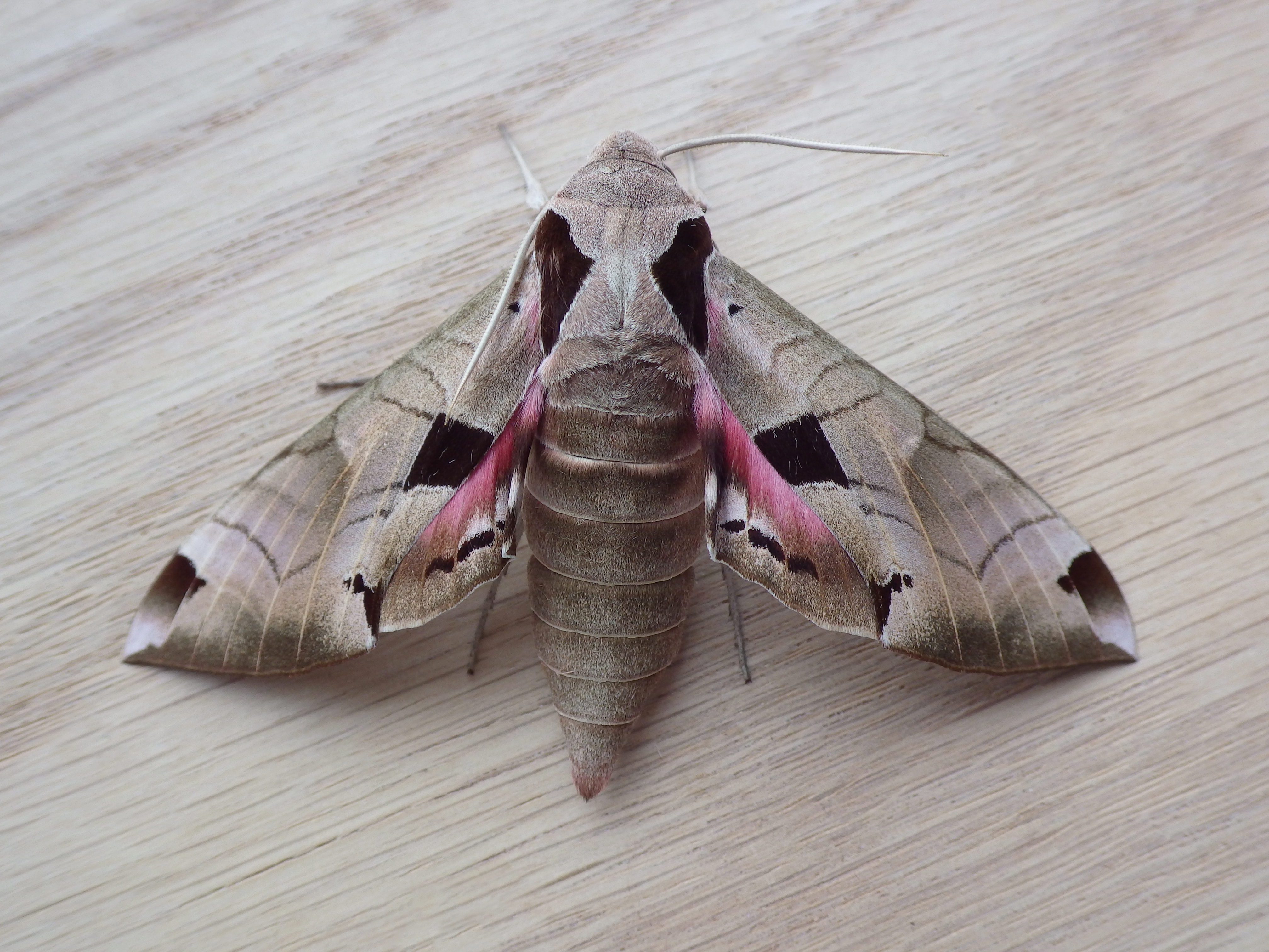
Darling Underwing (Catocala cara). © jonnx12 / Flickr The Achemon sphinx’s large brown wings have prominent, squarish dark spots, and when the wings spread, they reveal impressive pink hindwings. It’s mostly visible in the evening, and because of its voracious appetite, it’s known as a pest at some vineyards.
Range: U.S., except Pacific Northwest
Host plants: grapes, ampelopsis and more -
Beautiful Wood-nymph
Eudryas grata fabricius
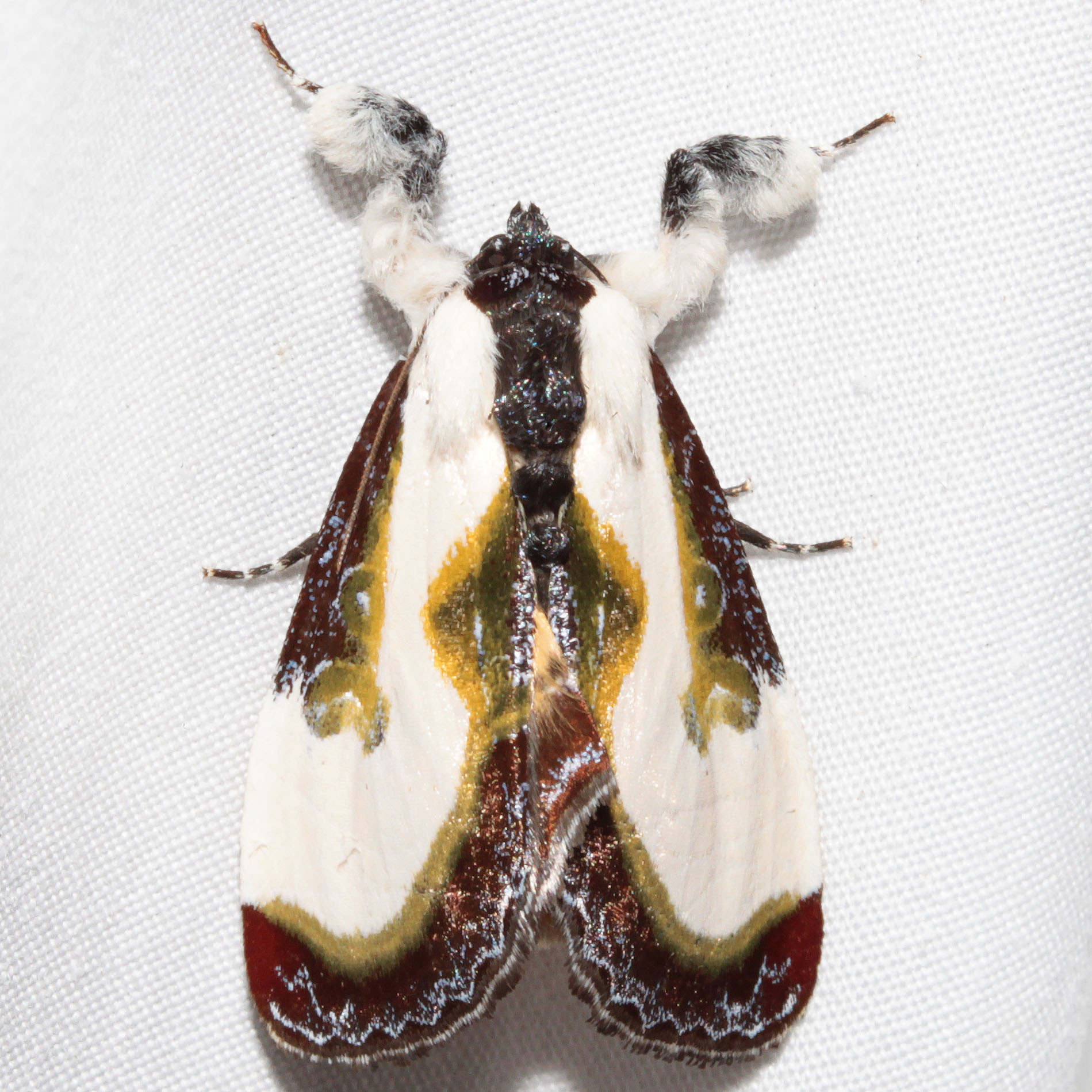
Photo © Ken Childs Primarily white in color, the beautiful wood nymph has eye-pleasing pops of color on its body, including a reddish-brown band on the tip of its wings and reveals bright yellow underneath. When at rest, this bug rolls up its wings to make predators think it’ a bird dropping.
Range: eastern U.S.
Host plants: Virginia creepers, hops, grapes, etc. -
Io Moth
Automeris io
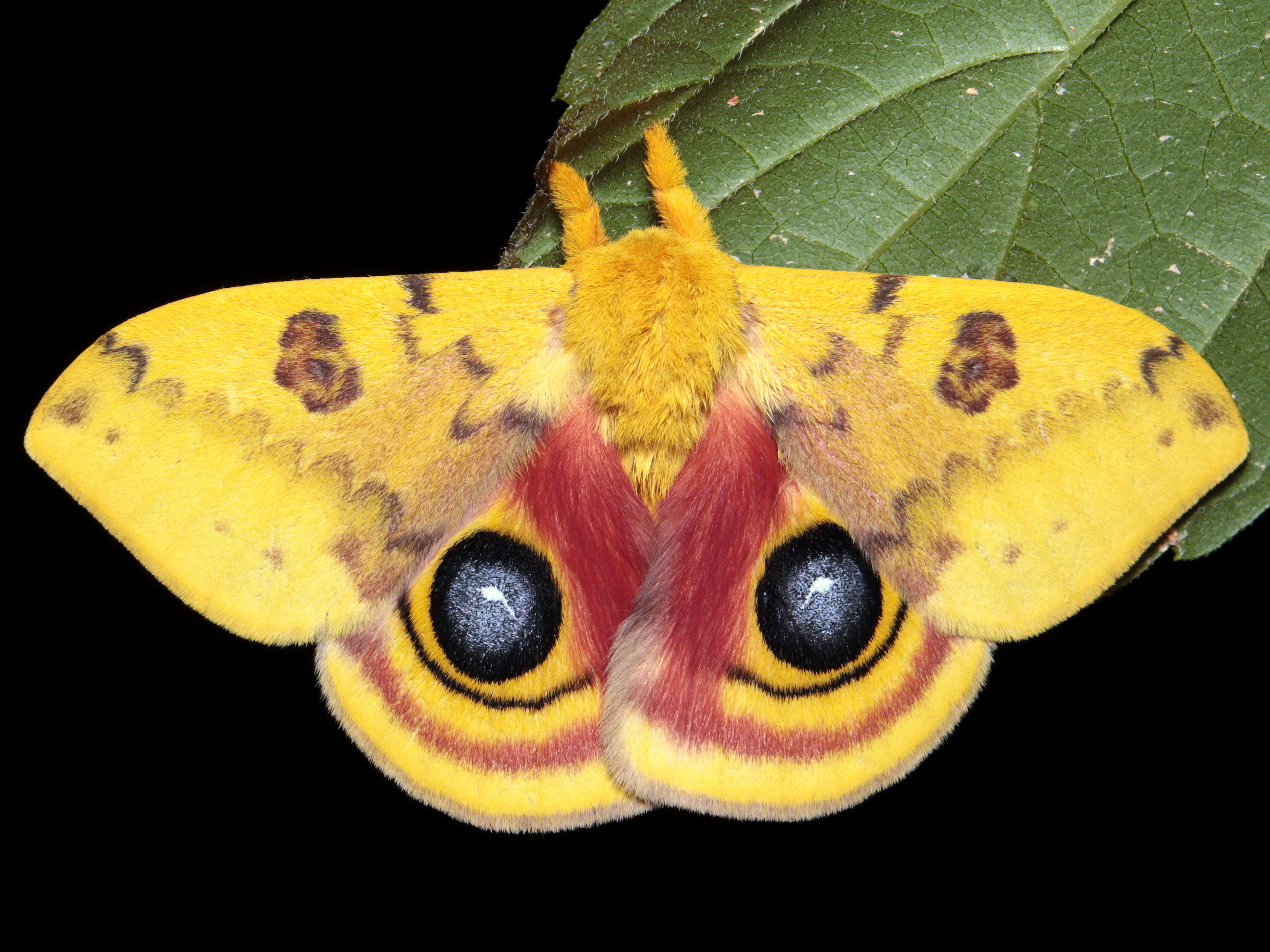
Photo © Ken Childs This relatively plain-looking moth opens its wings to reveal grand yellow-and-pink hindwings with large black and blue eyespots. Eyespots are there to shock birds and other predators. To locate them, watch in the late morning to early afternoon. Look for young caterpillars, often found feeding together in one long “train.”
Range: eastern U.S.
Host plants: willows, currants, pears, etc. -
Harnessed Moth
Apantesis phalerata

Photo © Ken Childs This wildly-colored moth has an extremely striking wing pattern, which is mostly black with cream-colored borders. When opening its wings, the harnessed moth reveals a pronounced yellow and pinkish or reddish hindwing.
Range: eastern U.S.
Host plants: clover, corn, dandelions, plantains, etc. -
Painted Lichen Moth
Hypoprepia fucosa hübner
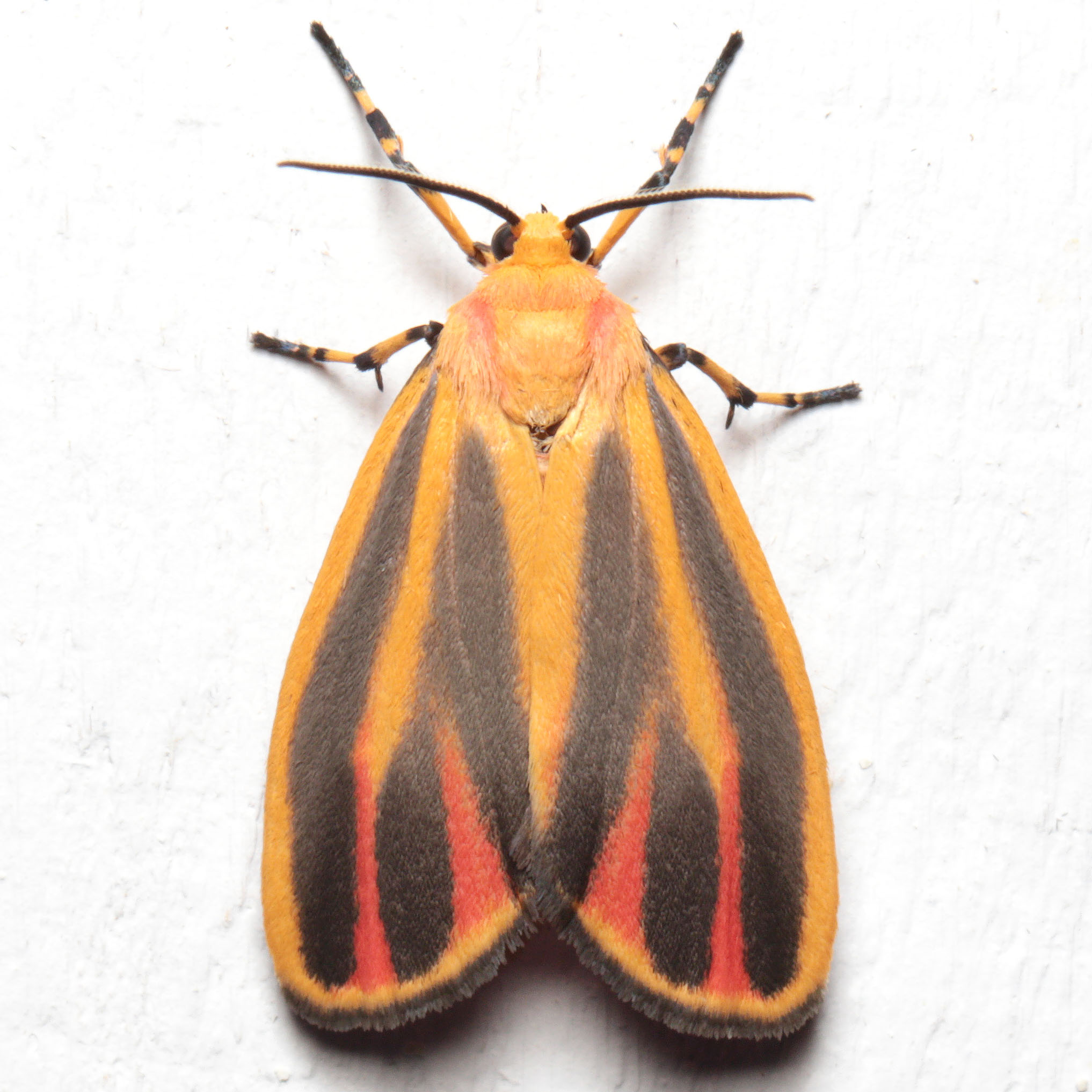
Photo © Ken Childs The painted lichen moth has a noticeable wing pattern, with thick gray and yellow streaks and additional pops of color ranging from pink to red. According to the University of Milwaukee Wisconsin, these insects can do “fecal flicking,” which means they can fire their poop up to 30 body lengths away from themselves. Researchers think this skill helps the moth avoid predatory wasps and parasites which track down prey by the scent of its feces, or “frass.”
Range: eastern U.S.
Host plants: mosses and lichens on trees -
Oleander Hawk-moth
Daphnis nerii
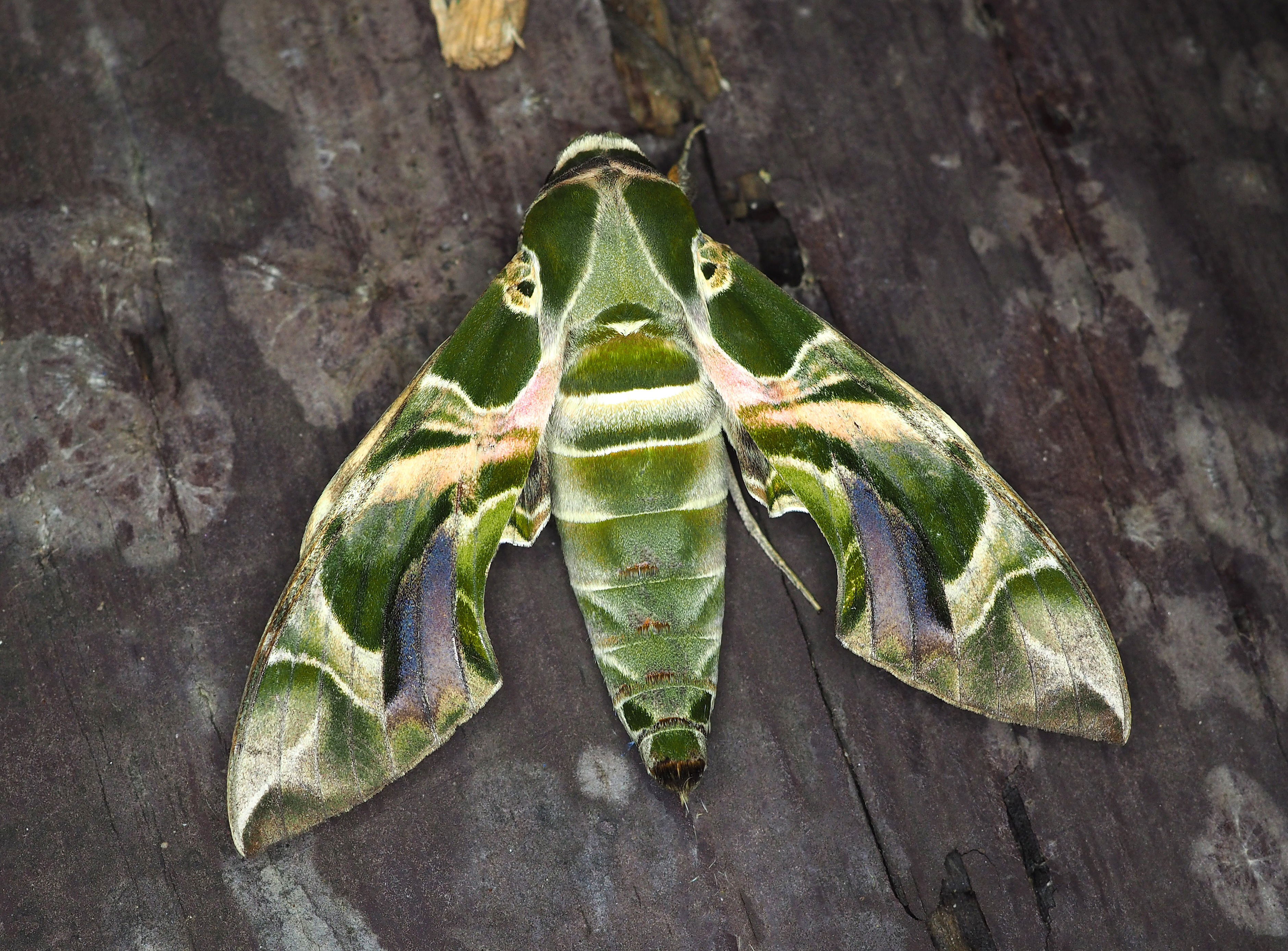
Photo © Paul Parsons An incredible green-and-black beauty, this moth was unfortunately introduced to Hawaii though most of its range is in Europe, Africa and Asia. You can find it at dusk feeding from flowers, such as honeysuckle and tobacco, or at night near a light source.
Range: Hawaii
Host plants: periwinkles and oleanders -
Scarlet-bodied Wasp Moth
Cosmosoma myrodora
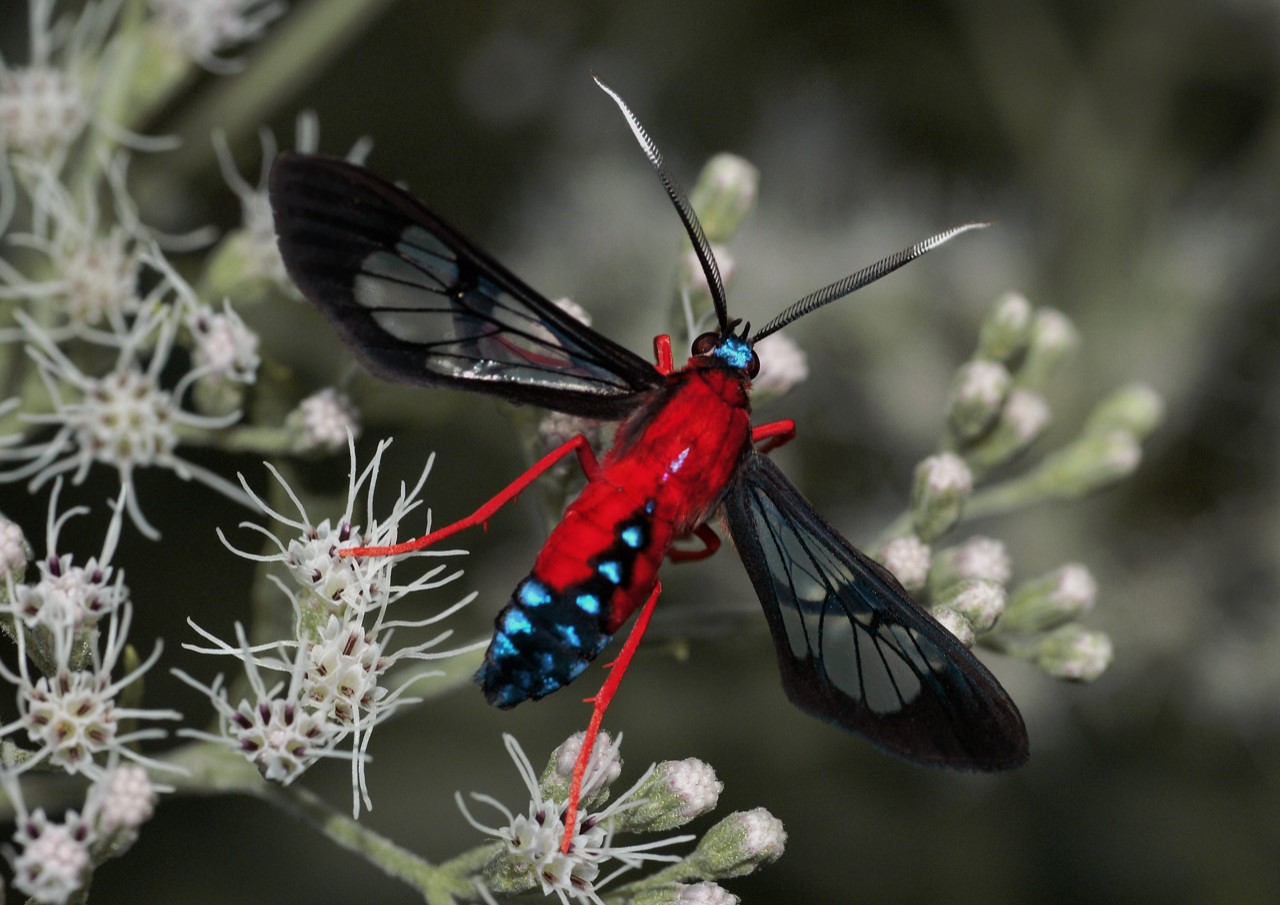
Photo © Claudia Husseneder The scarlet-bodied wasp moth has an extraordinary red body and transparent wings edged in black to make it appear as though it’s a wasp. “Your chance of surviving greatly increases if you look like something really dangerous,” said Kawahara.
Range: Southeast U.S.
Host plants: hempweed
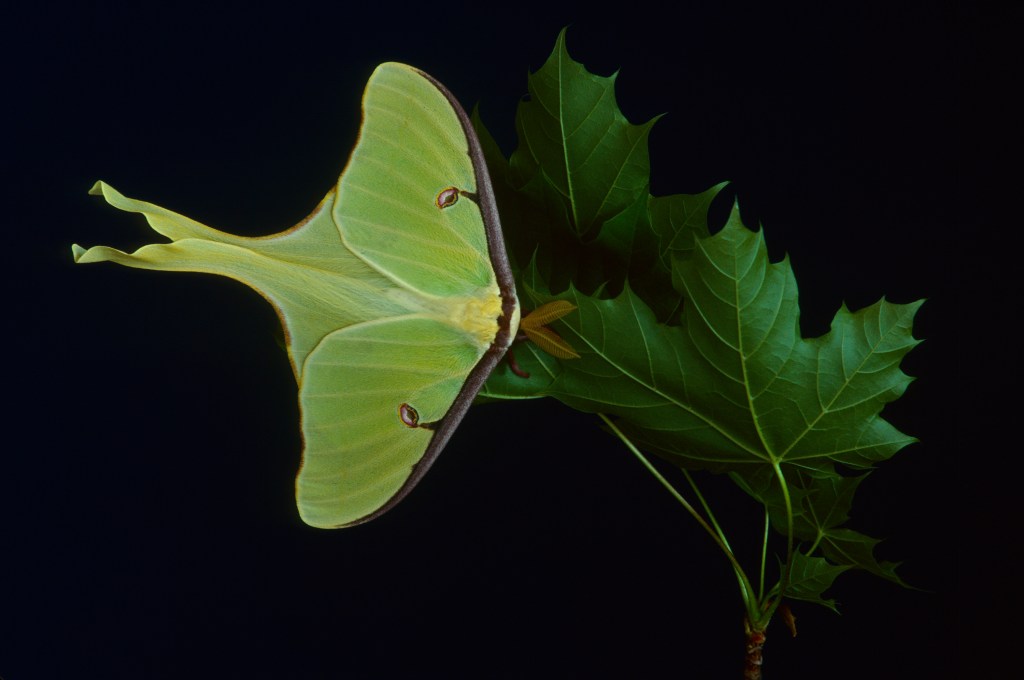



Photo of minute moth.
I have found a scarlet bodied wasp moth on a rosemary bush here in Xalkidiki Greece. Is it unusual here.
Thanks for sharing the cool stuff. Here check a shot of Scarlet-bodied wasp moth by me. ;P
https://www.instagram.com/p/B_c-1-LgQY0/
https://followerscart.com/
In all my years hiking in the Spokane, Washington area I had not encountered the large moth seen today (13 July, 2020) on the trail. This was in Knothead Draw, trail #500, about a mile to 1 1/2 mile upland from Indian Painted Rocks parking lot. It clung head-up to some low foliage. Outer wings were at least 2 inches in length ( I just pulled out a tape measure to estimate the length of memory; I had hunkered down to get a closer look) and folded over the body. The area enclosed by the wings indicates a fairly large, heavy moth. Wing pattern was of swirls of very black and carmine, maybe scarlet (blood?) red with black borders. Dark and deep colors. (I do not carry a phone/camera, else would have taken a picture.) No iridescence on wings. What I could see of the head and “shoulders” of thorax, were mildly hairy (unlike a silk moth) or spiky and quite shiny. No antennae visible. Black hooks to feet; black eyes.
Have you tried looking at the cinnabar moth? It’s really pretty, and could be what you saw. I’m no moth expert, though. If nothing else, you’ll get to see pictures of a very lovely moth.
Is the Eudryas Grata poisonous?
I have one in my yard, but I don’t know if it’s poisonous.
I was also looking for moths in my part of the country, but found none. The only one seen in the west is the Achemon sphinx, but not in the Pacific NW, which is where I am. Do we not have colorful moths? If not, it would be interesting to know why.
I don’t know about any others, but I’ve seen a couple of garden tiger moths in Wyoming! I think you’re less likely to see as many colorful bugs up north, because it’s colder and we have fewer colorful plants, too. But there’s a few neat ones!
There may also just be fewer people in this direction, on average, so maybe we’re just not finding the ones that are hidden around.
Nature at it’s best…STUNNING!!!!!
Thank you for the marvelous listing of moths!!